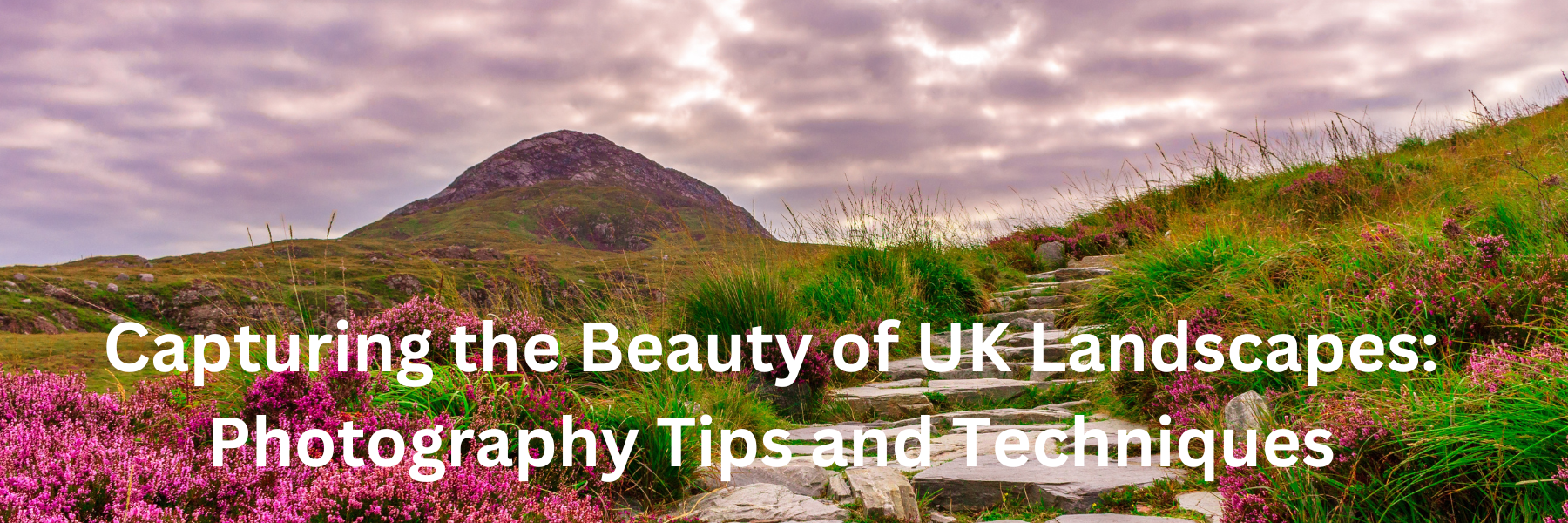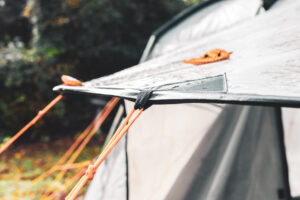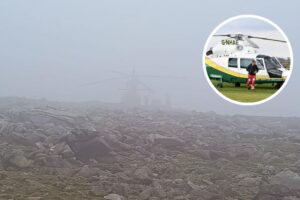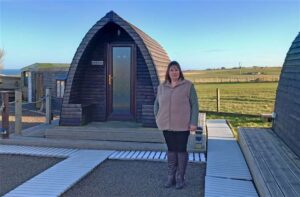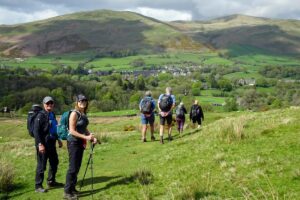Embarking on a thrilling escapade amidst the UK’s breathtaking landscapes can be a surreal experience. But how do you immortalise those stunning vistas, verdant hills, and dramatic coastlines? Fear not, shutterbugs! We’re here to guide you through capturing the fleeting beauty of the UK’s sceneries. Master the delicate blend between nature and your camera lens with our compelling photography tips and techniques. From Snowdonia’s rugged peaks to Lake District’s serene waters – bring them all straight into your album with these pro-tips that are worth more than a thousand words.
To capture the beauty of UK landscapes, invest in a high-resolution camera with a wide-angle lens and experiment with different settings and compositions. Plan your shoots around the best lighting conditions, including sunrise and sunset, and try shooting in different weather conditions for unique results. Get creative with your perspectives and angles, use a tripod for stability, and consider investing in polarising or neutral density philtres. Don’t forget to take your time, be patient, and have fun experimenting with different approaches to capturing the natural beauty of UK landscapes through your camera lens.
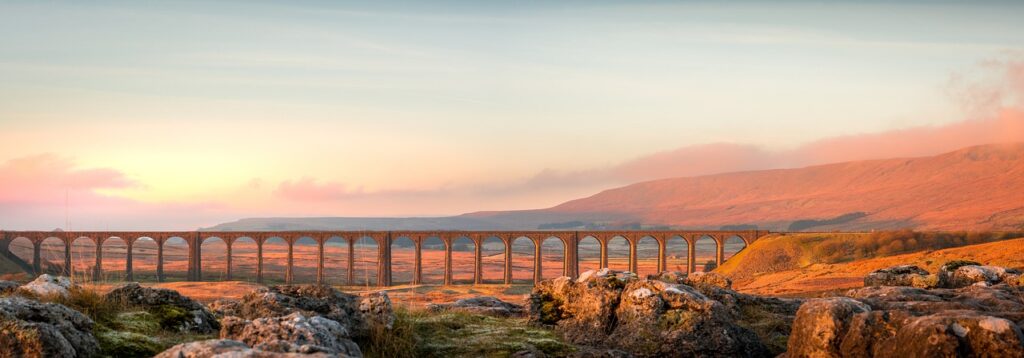
Capturing the Beauty of UK Landscapes
The United Kingdom is renowned for its picturesque landscapes, making it a paradise for landscape photographers. Whether you’re captivated by the rugged coastline, lush greenery, or rolling hills, there’s an abundance of beauty just waiting to be captured through your lens. To truly do justice to these breathtaking landscapes, it’s essential to consider various techniques and approaches that can elevate your photography skills.
One important factor in capturing the beauty of UK landscapes is timing. Depending on the location and desired effect, different times of the day can offer unique lighting conditions. For instance, during golden hour – the hour after sunrise or before sunset – the soft sunlight creates warm tones and long shadows, adding depth and texture to your photographs. On the other hand, shooting during blue hour – before sunrise or after sunset – can result in stunning atmospheric images with cool hues.
Composition plays a significant role in creating impactful landscape photographs. Imagine standing at the edge of a cliff overlooking a vast coastline. Instead of simply snapping a photo, take a moment to assess the scene and identify key elements that will enhance the composition. Perhaps there’s a prominent rocky outcrop that can serve as a focal point, leading the viewer’s eye toward the horizon. Consider utilising the rule of thirds or leading lines to guide the viewer’s gaze and create visual interest.
While picturesque locations are abundant throughout the UK, not all scenes translate well into compelling photographs. It’s crucial to have a discerning eye and find subjects that resonate with you personally. What story or emotion does this landscape evoke? Is there a particular feature or aspect that stands out? By connecting with your subject on a deeper level, you can infuse your photographs with an added layer of meaning and convey your own unique perspective.
Now that we understand some fundamental techniques for capturing the beauty of UK landscapes, let’s explore some of the best photography locations this country has to offer.
Best Photography Locations in the UK
The UK offers an array of stunning vistas for landscape photography, from moorlands to coastlines. With expert professional guides providing recommendations, you can embark on a journey to discover some of the most breathtaking locations across Scotland, Northern and Southeast England, the Midlands, East Anglia, Wales, and Northern Ireland.
In Scotland, recommended locations include Traigh Rosamol (Isle of Harris), Ben Loyal from Lochan Hakel (Scottish Highlands), and Rannoch Moor and Lochan Na h’Achlaise (Scottish West Highlands). These places showcase the majestic beauty of Scotland’s landscapes, featuring serene lochs, rugged mountains, and dramatic skies.
Other Scottish locations worth visiting are Balnakeil Bay near Durness, Duncansby Head near John O’Groats, Glen Affric near Inverness, Stac Pollaidh in Assynt near Ullapool, and Glen Etive and the River Etive. Each of these spots offers its own unique charm and photographic opportunities.
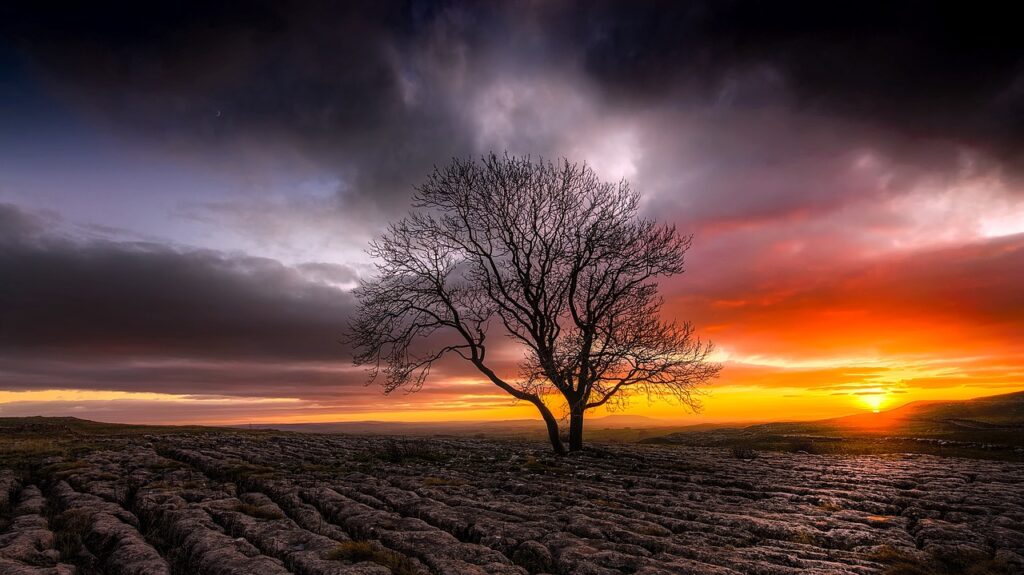
Heading down to Northern England, you’ll find captivating locations such as Wastwater in the Lake District, known for its mirror-like reflections of the surrounding peaks. Additionally, Blackpool North Pier provides a mix of vibrant seaside attractions and historic architecture perfect for capturing dynamic scenes. And let’s not forget about Moonrise over Blea Tarn and the Langdales in the Lake District, where you can capture ethereal landscapes illuminated by the moonlight.
Bamburgh Castle along the Northumberland coast is another noteworthy location with its imposing fortress set against a backdrop of beautiful beaches. This spot offers endless possibilities for dramatic shots with its rich history and stunning coastal scenery.
These are just a few examples of the many incredible photography locations throughout the UK. Each region has its own distinct charm and hidden gems waiting to be discovered. So grab your camera, explore these breathtaking landscapes, and capture the beauty that the UK has to offer.
Essential Camera and Lens Tips for Landscape Photography
When it comes to capturing the stunning beauty of UK landscapes through photography, having the right camera and lens is absolutely essential. While creativity and composition play a crucial role, investing in quality equipment can significantly improve the overall result of your images. Here are some essential tips to consider:
Firstly, invest in a good camera and lens. Having a camera with high resolution and a wide-angle lens will produce better results. The high resolution allows for capturing intricate details, while the wide-angle lens helps in capturing the expansive nature of landscapes.
Next, take the time to get to know your camera’s settings and capabilities. Experiment with different settings and learn which ones work best for different scenarios. Understanding how to adjust exposure, aperture, shutter speed, and ISO will allow you to have greater control over the final outcome of your images.
To further enhance your landscape photography skills, study the basics of composition and design. Understanding principles like the rule of thirds, leading lines, and balancing elements within the frame will help you create visually appealing compositions.
Another important aspect is planning your shoots around the best light. Sunrise and sunset offer soft, warm lighting that can give a magical touch to your images. Additionally, stormy conditions can create dramatic photos with dynamic skies.
Don’t be afraid to experiment with different weather conditions as well. Shooting in fog, rain, or snow can add a unique element to your landscapes and create captivating visuals.
Let’s say you’re photographing a rugged coastline in Cornwall during sunset. The golden hour light casts beautiful warm tones on the cliffs and seascapes. You experiment by using a long exposure to capture the movement of crashing waves against rocks. The result? An ethereal image where every detail shines through.
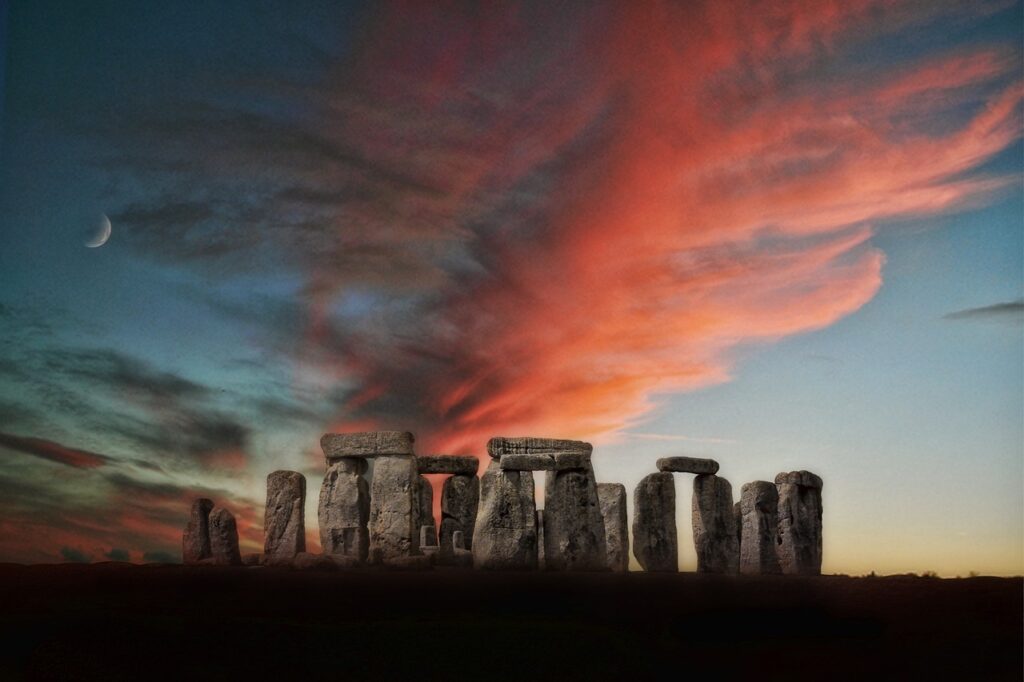
In addition to exploring various lighting conditions, try different perspectives and angles when photographing landscapes. Get low to the ground, climb higher up a hill or ledge, and experiment with different viewpoints to add depth and interest to your images.
Using a tripod for stability and sharpness is especially crucial in landscape photography, especially in low-light conditions or when using longer exposures. It helps eliminate camera shake, ensuring your photos are sharp and detailed.
Consider investing in a polarising philtre as well. This philtre enhances colours and reduces glare, resulting in more vibrant and dynamic images.
Now that you have an idea of essential camera and lens tips for landscape photography, let’s explore the importance of finding the best angle and composition for your images.
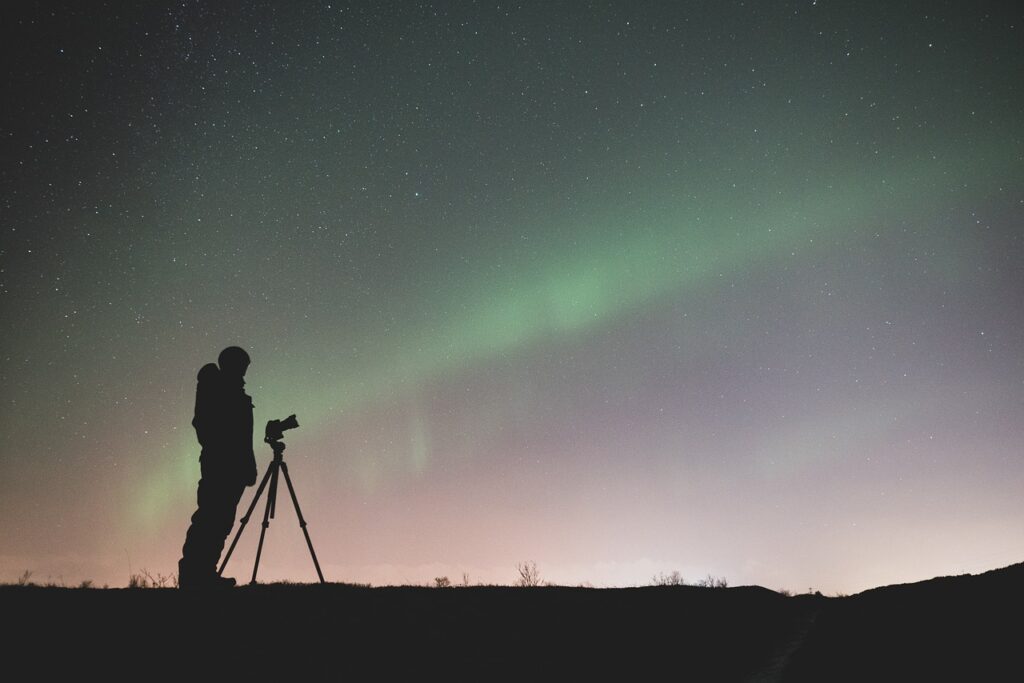
Best Angle and Composition for Images
When it comes to capturing the beauty of UK landscapes, finding the best angle and composition is vital to create captivating images that evoke emotion in viewers. Here are some considerations to keep in mind:
One key element to consider is looking for leading lines and patterns within the landscape. Natural lines like rivers or roads can guide the viewer’s eye through the image, adding interest and depth. Similarly, incorporating patterns found in nature can create visually appealing compositions.
Incorporating interesting foreground elements can also enhance your compositions. Rocks, trees, or other objects in the foreground provide a sense of scale, depth, and perspective. They draw the viewer’s attention into the frame and create a more immersive experience.
Pay attention to the sky as well when composing your landscape shots. The sky can either enhance or detract from the overall image. Interesting cloud formations can add drama and visual interest to your photos. If the sky appears bland or empty, consider adjusting your composition to minimise its presence or focus on other elements within the scene.
Imagine photographing a stunning sunset over Loch Ness in Scotland. By including interesting rocks in the foreground, you create a sense of depth and lead the viewer’s eye towards the reflexion of the colourful sky on the calm waters. The combination of elements creates a powerful and captivating composition.
Another technique to consider is utilising the rule of thirds. This principle suggests dividing your frame into a grid of nine equal parts and placing key elements along these gridlines or their intersections. Doing so can create a well-balanced and visually pleasing composition.
Let’s say you’re photographing the iconic White Cliffs of Dover. By placing the cliffs along one of the vertical gridlines, you add balance to the image, while allowing the vast expanse of the sky to occupy two-thirds of the frame. This composition creates a sense of grandeur and highlights both the cliffs and their surroundings.
Utilising Natural Light for the Best Shots
When it comes to capturing the beauty of UK landscapes, one of the most crucial elements to consider is natural light. The right lighting can truly make or break a photograph, transforming an ordinary scene into something extraordinary. Here are some tips and techniques to help you make the most of natural light and capture stunning shots.
First and foremost, timing is everything. Pay attention to the different times of day and how they affect the quality and direction of light. Golden hour, which occurs during the first hour after sunrise and the last hour before sunset, offers soft, warm lighting that can add a magical touch to your images. During this time, the low angle of the sun creates long shadows and enhances textures, adding depth and dimension to your photographs.
Imagine standing on a picturesque hillside in the Scottish Highlands just as the first rays of dawn pierce through dark clouds, casting an ethereal golden glow over the rolling landscape, illuminating every rugged detail.

Another important aspect to consider is weather conditions. Stormy skies can add drama and intensity to your shots, while cloudy days provide a diffused light that can be ideal for capturing subtle details without harsh shadows. Don’t shy away from shooting in less-than-perfect weather; sometimes those moody atmospheres can result in truly breathtaking images that evoke powerful emotions.
To maximise the potential of natural light, it’s also essential to understand composition and how it interacts with light. Familiarise yourself with fundamental principles such as the rule of thirds and leading lines, which can guide your eye towards compelling focal points within your frame. Additionally, look for patterns and textures that are accentuated by different lighting conditions and use them strategically in your compositions.
Now that we’ve explored how to utilise natural light effectively, let’s dive into advanced techniques specifically tailored for photographing UK landscapes.
Advanced Techniques for Photographing UK Landscapes
The diverse landscapes of the UK offer endless opportunities for photographers to experiment with advanced techniques and elevate their images to the next level. Here are a few techniques you can try to capture the essence and beauty of the stunning landscapes that this enchanting country has to offer.
One technique worth exploring is using telezoom lenses. These lenses allow you to capture distant objects with great detail, perfect for highlighting unique features in expansive scenes or compressing perspectives to create a sense of depth. By zooming in on specific elements within a landscape, you can isolate subjects and draw attention to intricate details that might otherwise be overlooked.
Imagine photographing the rugged coastline of Cornwall, where towering cliffs meet crashing waves. By using a telezoom lens, you can focus on the intricate patterns and textures of the rock formations, immersing viewers in the raw power and beauty of the scene.
Another technique to consider is capturing motion. Waterfalls, clouds, and other moving elements can add a dynamic energy to your photographs. Experiment with different shutter speeds – faster ones to freeze motion or slower ones to create silky smooth water effects or captivating streaks in the sky.
Additionally, don’t shy away from experimenting with extreme wide-angle lenses or even fisheye lenses. These lenses can offer a fresh perspective and introduce a sense of scale and distortion that adds uniqueness to your images. Be sure to learn about defishing techniques if you opt for fisheye lenses to correct any distortions in post-processing.
Some photographers prefer capturing UK landscapes during golden hour due to the warm and soft lighting it offers. However, it’s essential not to limit yourself only to specific times of day. Each time brings its own charm and potential for captivating images. For example, shooting during blue hour – which happens before sunrise and after sunset – can create a serene and magical atmosphere with deep blue skies and city lights shimmering in the background. The twilight hours before dawn or after sunset can also offer an opportunity to capture breathtaking scenes with a touch of mystery.
Andy Halliday is a passionate outdoor enthusiast and an avid camper. He has been exploring the wilderness and camping in the great outdoors for over two decades, and his experiences have inspired him to write about the joys of camping and the beauty of nature.
As a camping enthusiast, he believes that spending time in the wilderness is not just a way to escape the daily grind, but also a way to connect with nature and gain a deeper appreciation for the natural world. Andy has camped in various locations across the country and on two different continents. He has a wealth of knowledge and experience to share with fellow campers.
Through his writing, he hopes to inspire you to venture out into the wilderness and experience the beauty and serenity of camping. Andy articles and guides provide useful tips, advice, and insights on everything from selecting the right gear and equipment to finding the best campsites and hiking trails.

